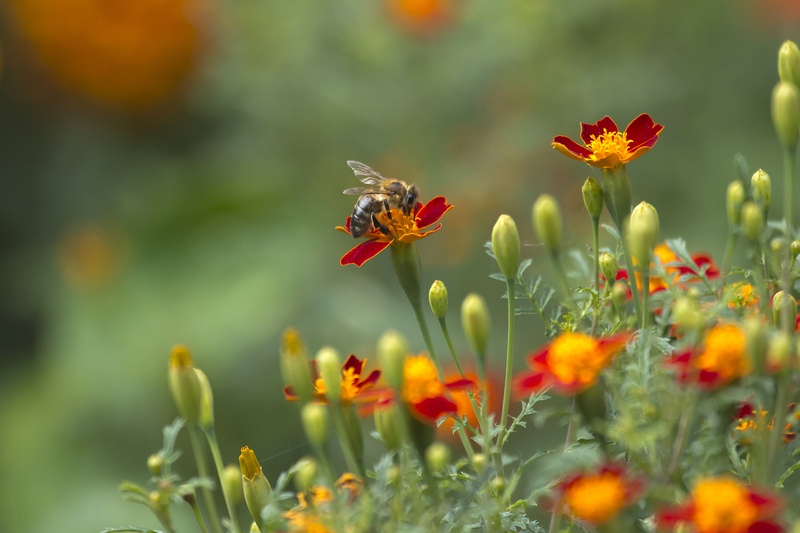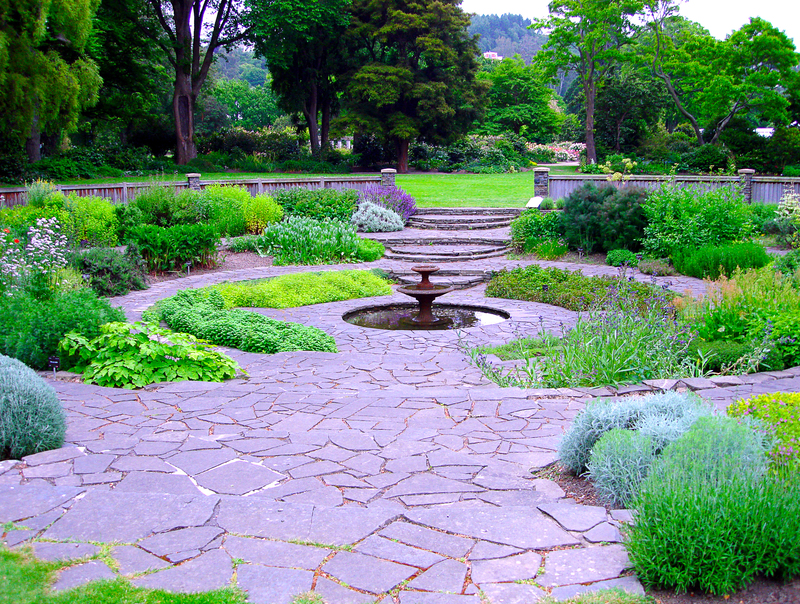Breathe Life Into Small Spaces with These 10 Evergreen Trees
Struggling to find the perfect greenery for your compact garden, balcony, or patio? Evergreen trees are the answer! These versatile, year-round beauties can add structure, color, and privacy to your outdoor areas--no matter how small they might be. In this comprehensive guide, discover the best evergreen trees for small spaces, and learn how to nurture them so they're healthy and striking all year long.
Why Choose Evergreen Trees for Small Gardens?
Evergreen trees are legendary for their ability to retain lush foliage throughout every season. Unlike deciduous varieties, you won't have to deal with barren branches in the winter months. They not only ensure consistent greenery but also provide privacy, act as windscreens, and contribute to improved air quality.
- Year-Round Beauty: Enjoy vibrant foliage all through the year.
- Space Efficiency: Many evergreen varieties are bred for compact growth.
- Low Maintenance: Most evergreens require minimal pruning and care.
- Wildlife Habitat: They offer shelter and food for birds and beneficial insects.
How to Select the Best Compact Evergreen Trees?
Choosing evergreen trees for limited spaces requires attention to their mature size, growth rate, root system, and light requirements. It's essential to match a variety's needs to your site and design goals:
- Check Maximum Height and Width: Aim for trees that won't outgrow your space.
- Consider Growth Habit: Columnar or narrowly pyramidal shapes often suit smaller gardens.
- Root Spread: Some evergreens have non-invasive roots--ideal for planters or near buildings.
- Shade Versus Sun: Place your tree where it receives its preferred light--many tolerate part shade.

10 Evergreen Trees Perfect for Small Spaces
Ready to transform your tiny garden nook, rooftop, or balcony? Explore these 10 top evergreen trees for compact gardens--all are celebrated for manageable size, visual impact, and resilience.
1. Dwarf Alberta Spruce (Picea glauca 'Conica')
- Growth Habit: Slow-growing, dense, conical form
- Height: 6 to 8 feet tall at maturity
- Spread: 3 to 5 feet wide
- Light: Full sun to partial shade
- Why It's Ideal: The Dwarf Alberta Spruce brings a formal, elegant touch to small spaces and is exceptionally well-suited to containers or tight borders.
2. Japanese Holly (Ilex crenata)
- Growth Habit: Dense, bushy, with tiny leaves resembling boxwood
- Height: 4 to 8 feet
- Spread: 3 to 6 feet
- Light: Sun or part shade
- Why It's Perfect: Its versatility in shape and size makes Japanese Holly perfect for low hedges, topiary, or standalone focal points in smaller landscapes.
3. Sky Pencil Holly (Ilex crenata 'Sky Pencil')
- Growth Habit: Tall, narrow columnar shape
- Height: 6 to 10 feet
- Spread: 2 to 3 feet
- Light: Full sun to light shade
- Why It's Unique: The Sky Pencil Holly is adored for its upright, space-saving silhouette--ideal for framing entrances or screening in slender beds.
4. Little Gem Magnolia (Magnolia grandiflora 'Little Gem')
- Growth Habit: Compact, upright, pyramidal
- Height: 10 to 15 feet
- Spread: 6 to 8 feet
- Light: Full sun is best
- Why It Stands Out: Enjoy glossy green leaves and fragrant, white summer flowers--a true evergreen tree for small gardens that offers year-round interest.
5. Hinoki Cypress (Chamaecyparis obtusa)
- Growth Habit: Graceful, slow-growing; dwarf cultivars available
- Height: Up to 8 feet (dwarf types stay under 4 feet)
- Spread: 3 to 5 feet
- Light: Prefers full sun or dappled shade
- Why Gardeners Love It: Its lush, fan-shaped foliage and lovely texture infuse life and a Zen-like tranquility into tiniest of gardens.
6. Bay Laurel (Laurus nobilis)
- Growth Habit: Multi-stemmed or can be pruned as a small tree
- Height: 6 to 12 feet (can be kept smaller with pruning)
- Spread: 3 to 6 feet
- Light: Full sun to partial shade
- Why It's Practical: Not only does Bay Laurel offer year-round greenery, but you can harvest its aromatic leaves for culinary use! Perfect for patios and container gardens.
7. Camellia (Camellia japonica, C. sasanqua)
- Growth Habit: Dense, rounded shrub or small tree
- Height: 6 to 12 feet (dwarf types stay smaller)
- Spread: 4 to 8 feet
- Light: Light shade (sheltered from harsh afternoon sun)
- Why It Charms: Camellias deliver glossy green leaves and stunning winter flowers--a boon for small courtyards and north-facing spots.
8. Italian Cypress (Cupressus sempervirens)
- Growth Habit: Strictly narrow, columnar form
- Height: Usually kept at 10 to 15 feet in urban spaces
- Spread: Rarely more than 3 feet
- Light: Full sun is a must
- Why It's Striking: Instantly add drama and Mediterranean flair--even to a tiny terrace or driveway--with the classic Italian Cypress.
9. Dwarf Yew (Taxus baccata 'Repandens' and others)
- Growth Habit: Slow-growing, spreading, can be pruned to desired shape
- Height: 3 to 5 feet (perfect for foundation plantings and bonsai)
- Spread: 4 to 6 feet
- Light: Sun to full shade tolerant
- Why It's Reliable: Very tough, shade-adaptable, and easy to clip into neat forms, making it an evergreen staple for small spaces.
10. Mountain Pepper (Tasmannia lanceolata)
- Growth Habit: Compact, bushy small tree
- Height: 6 to 10 feet
- Spread: 3 to 6 feet
- Light: Tolerates shade, prefers cool protected spots
- Why It's Special: This elegant evergreen features aromatic foliage and spicy fruit--add a touch of the wild to sheltered city gardens!
Tips for Planting and Growing Evergreens in Tight Spaces
Making the most out of compact evergreen trees means giving them the conditions and care they need to thrive--without overwhelming your garden design.
- Choose the Right Size at Maturity: Don't be fooled by a young tree's small pot size--research how large it will get over time.
- Opt for Containers: Many small evergreens flourish in pots, allowing you to control soil and move them easily.
- Soil Preparation: Well-drained, fertile soil is crucial for healthy root systems.
- Proper Spacing: Avoid overcrowding--ensure enough room for air and light penetration.
- Pruning: Gentle, regular shaping maintains form and prevents overgrowth in confined areas.
- Feeding and Watering: Use slow-release fertilizer and water consistently, especially during dry spells or for container-grown specimens.
Design Ideas for Small Spaces Using Evergreen Trees
Your miniature landscape doesn't have to be monotonous or cluttered! Pairing evergreen trees suited for small gardens with complementary plantings creates depth, privacy, and year-round cheer.
- Narrow Hedges: Use columnar evergreens as slender privacy screens or living fences.
- Formal Accents: Plant symmetrical pairs in containers by doorways for instant curb appeal.
- Architectural Interest: Mix different textures and colors--combine glossy-leafed hollies with feathery conifers or flowering camellias.
- Garden Rooms: Define 'rooms' or pathways in a backyard with evergreen focal points at corners or along borders.
- Vertical Spaces: Go upwards--Sky Pencil Holly or Italian Cypress are naturals for height in otherwise crowded settings.
Common Challenges and Solutions with Compact Evergreen Trees
Even in the smallest gardens, caring for evergreen trees for limited space comes with unique hurdles. Here's how to overcome the most frequent issues:
-
Issue: Root crowding in containers
Solution: Repot every few years or choose wide, deep containers; trim roots when necessary. -
Issue: Pest and disease pressure due to poor air circulation
Solution: Give adequate spacing and prune to allow air flow; inspect regularly for problems. -
Issue: Overgrowth
Solution: Select slow-growing or dwarf varieties, and keep up with regular pruning to maintain the desired shape. -
Issue: Shade or Sunlight Mismatch
Solution: Match each species' light needs to your garden's exposure, or use containers to shift as the seasons change.
Expert Tips: Keeping Your Small Evergreen Trees Healthy
- Mulch Around the Base: This conserves moisture, suppresses weeds, and insulates roots.
- Avoid Waterlogging: Don't let pots or beds get waterlogged--well-drained soil is vital.
- Protect from Winter Damage: In very cold climates, shield container evergreens or move them against sheltered walls.
- Feed Annually: Use a balanced, slow-release fertilizer in early spring for lush growth.
- Inspect for Pests: Tiny spaces can see rapid pest outbreaks; a quick response keeps trees healthy year-round.

Frequently Asked Questions About Evergreen Trees for Small Spaces
-
Q: Can evergreen trees grow in pots or planters?
A: Yes! Many compact evergreens like Dwarf Alberta Spruce, Bay Laurel, and Hinoki Cypress thrive in containers--just ensure proper drainage and space for roots. -
Q: Which evergreen trees survive in shady spaces?
A: Camellia, Yew, and some dwarf holly types tolerate partial or even deep shade, making them excellent choices for north-facing patios or under-tree plantings. -
Q: What's the best evergreen for privacy in a tiny backyard?
A: Sky Pencil Holly or Italian Cypress work well for vertical screening without eating up width. For low screens, Dwarf Yew or Japanese Holly are great options. -
Q: Are there evergreen trees with flowers?
A: Absolutely! Camellias and Little Gem Magnolia provide vibrant blooms in addition to glossy foliage, offering double impact in compact gardens.
Conclusion: Transform Your Small Garden with Evergreens
Don't let a lack of space limit your dreams of lush, vibrant greenery! By choosing the right evergreen trees for small areas, you'll add year-round structure, privacy, and life to balconies, courtyards, and tiny backyard plots. Whether your style is classical or contemporary, there's a compact evergreen that fits perfectly--ready to become the enduring centerpiece of your outdoor retreat.
With thoughtful selection, smart planting, and a touch of care, even the smallest outdoor spaces can feel rich, welcoming, and alive every day of the year.